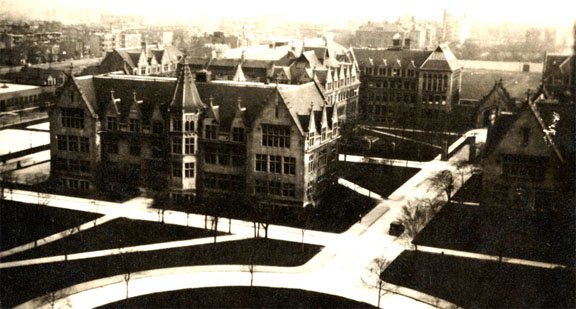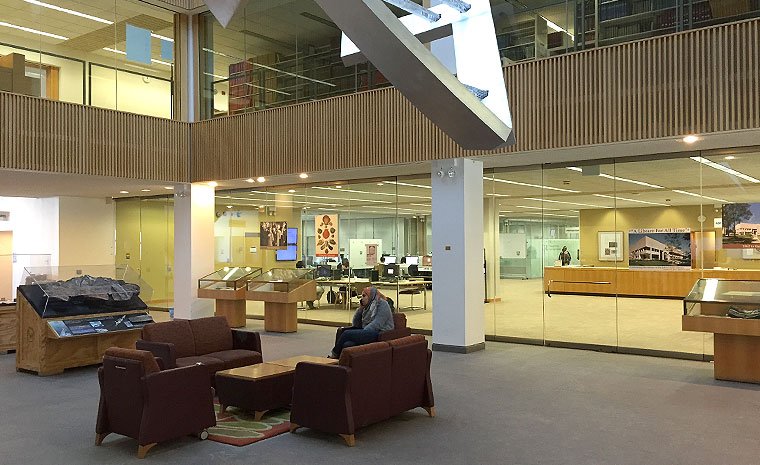Introduction
In celebration of the 125th anniversary of the University of Chicago's founding, this exhibit looks back at the establishment of the natural sciences at the University. The early University built programs in the physical and biological science from the ground up. They recruited eminent scientists and designed innovative laboratories and facilities for their often groundbreaking work. These achievements in discovery and teaching have had lasting impact on the sciences.
The Ogden Graduate School of Science
William B. Ogden, the first mayor of Chicago, was essential in establishing the University of Chicago's science. Seventy percent of Mr. Ogden's estate was devoted to the University of Chicago and the funds earmarked to support graduate students and facilities for "scientific investigation as well as fellowships and maintenance of laboratories in Physics, Chemistry, Biology, Geology, and Astronomy." Professors in the school should be allowed large portions of their time to devote themselves to original investigation.
By the 1920s, the departments in the Ogden School of Science had grown from the original five to 13: Mathematics, Astronomy, Physics, Chemistry, Geology, Geography, Zoology, Anatomy, Physiology, Botany, Pathology, Physiological Chemistry, and Hygiene and Bacteriology. An expected fourteenth being added soon with the Graduate School of Medicine.
Science Buildings on Campus
Of the seventeen buildings upon campus in 1897, eight were for scientific purposes. These included the Kent Chemical Laboratory, Ryerson Physical Laboratory, the Walker Museum, the Haskell Oriental Museum, and the newly constructed Hull Biological Laboratories.
From the Photographic Archive, Special Collections Research Center, University of Chicago Library. Available at: http://photoarchive.lib.uchicago.edu/. Identifier: apf2-04677

